Abstract
We have observed that canine peripheral blood mononuclear cells are ineffective as mediators of spontaneous cell-mediated cytotoxicity (SCMC) despite being excellent mediators of antibody-dependent cellular cytotoxicity (ADCC). Canine lymphocytes were unable to kill seven cell lines in SCMC assays including Chang, K-562, dog kidney, and foetal intestine. One the other hand, they were able to kill Chang and K-562 cell line cells as well as chicken red blood cells in ADCC assay systems. Canine mononuclear cells were 40% E-rosette forming, 30% surface immunoglobulin bearing, 14% Fc receptor bearing, and 13% esterase staining. K-562 cell line cells inhibited the capability of human peripheral blood cells but not canine peripheral blood cells to kill CRBCs in an ADCC assay. Fc-receptor bearing human lymphocytes of both T-cell and null-cell subclasses mediated both SCMC and ADCC, while Fc-receptor bearing canine lymphocytes mediated ADCC but not SCMC. These observations add to the evidence of a dichotomy between SCMC and ADDC with regards to either cell type or cell processes.
Full text
PDF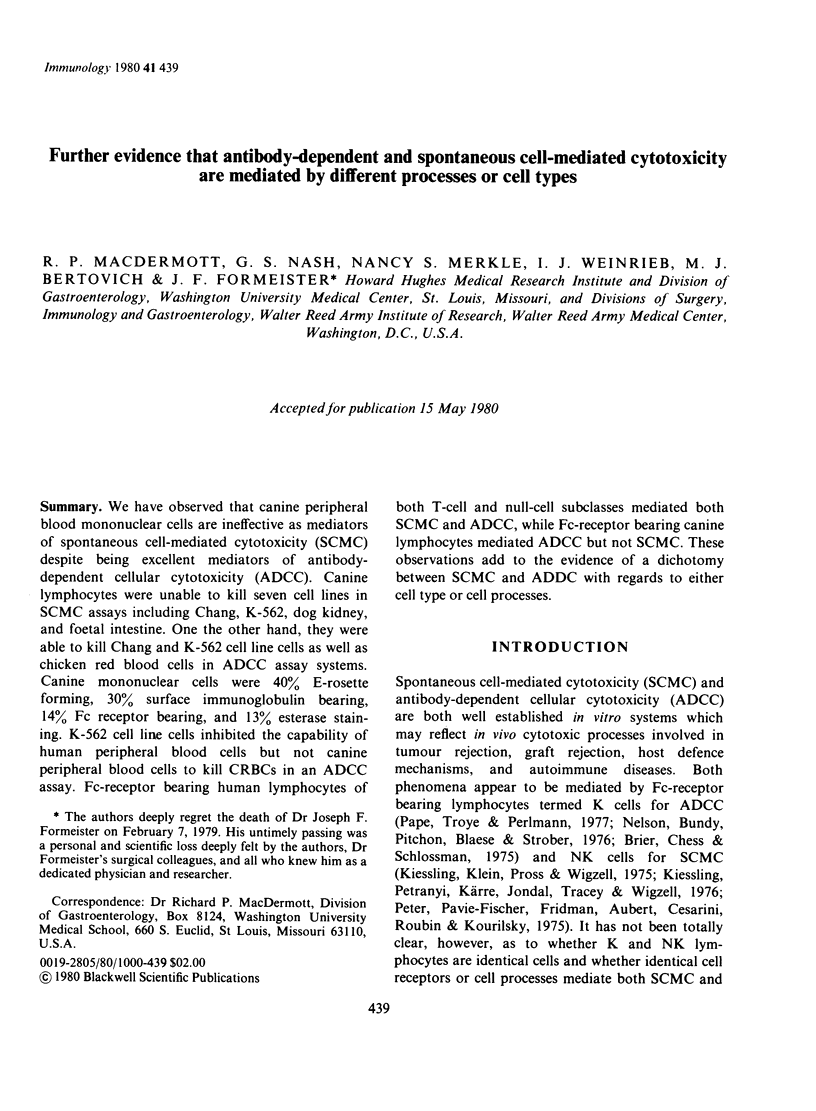
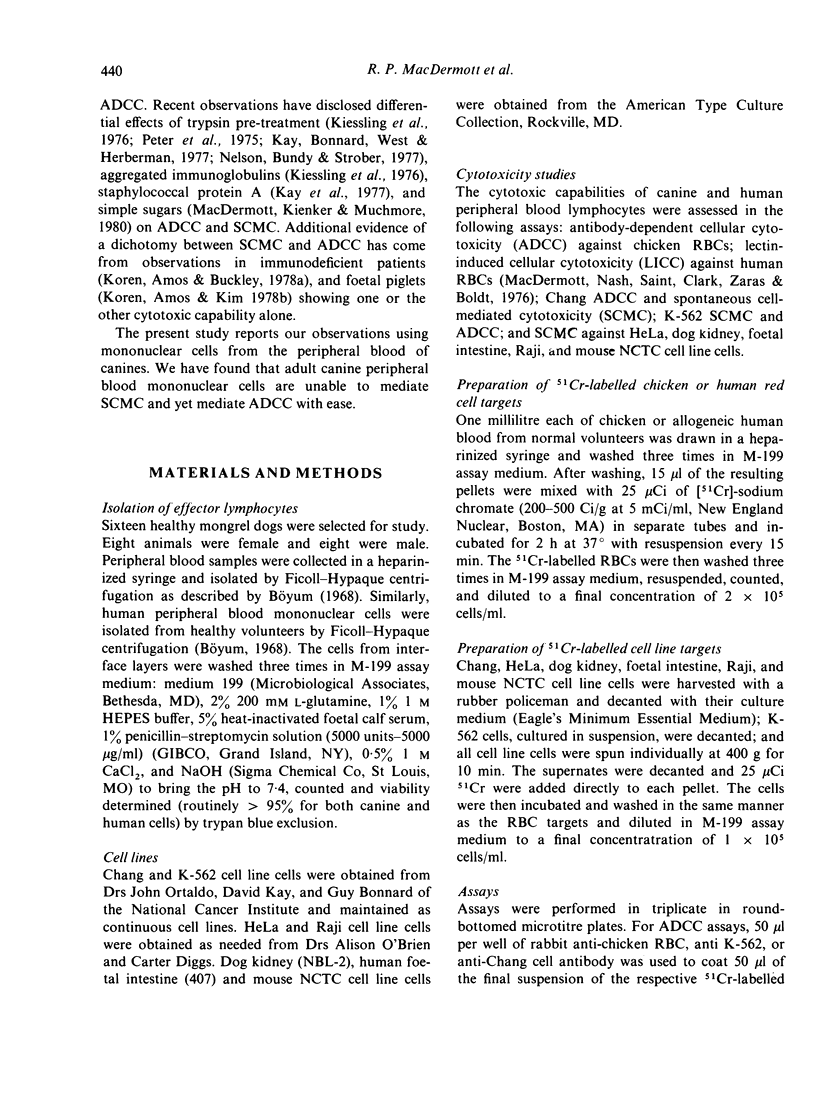
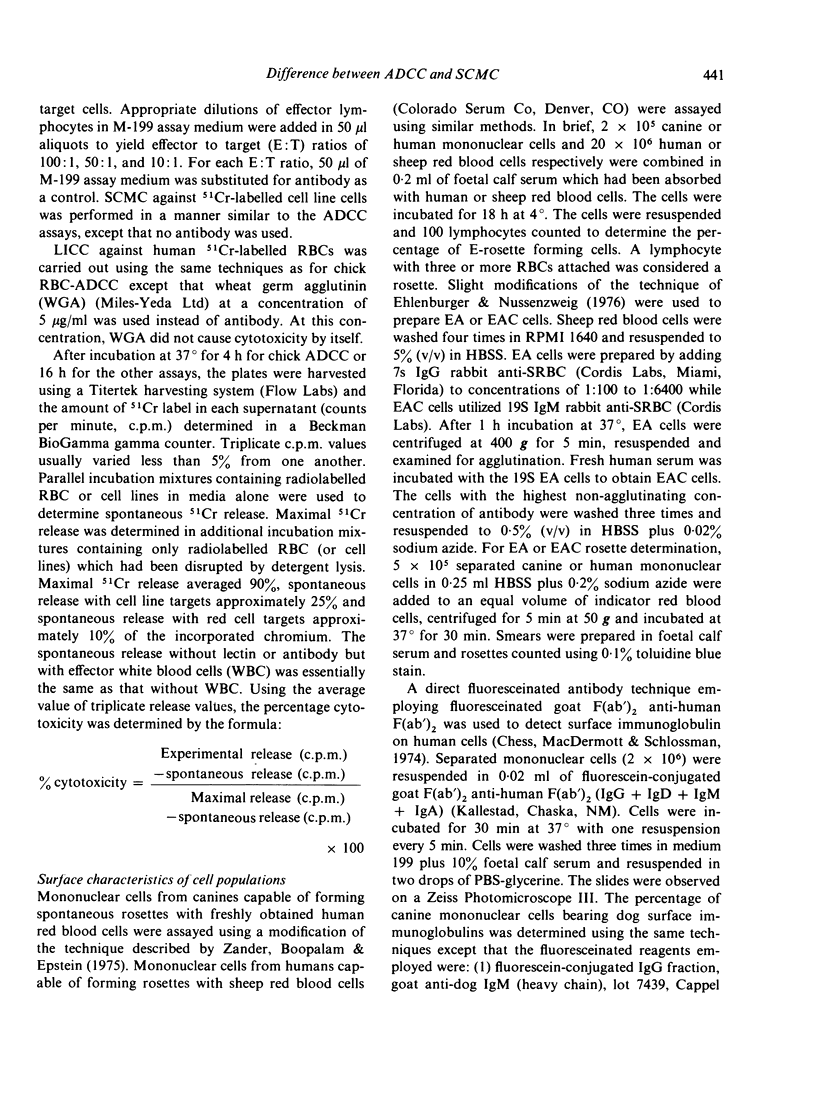
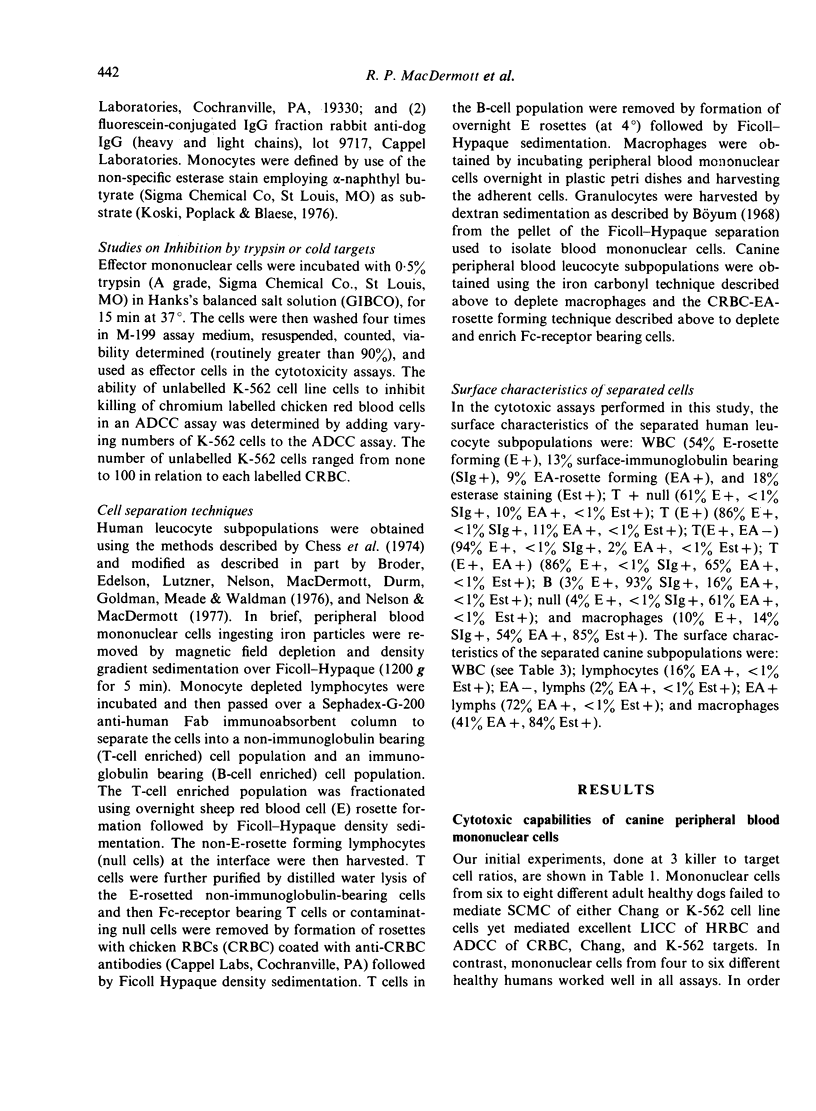
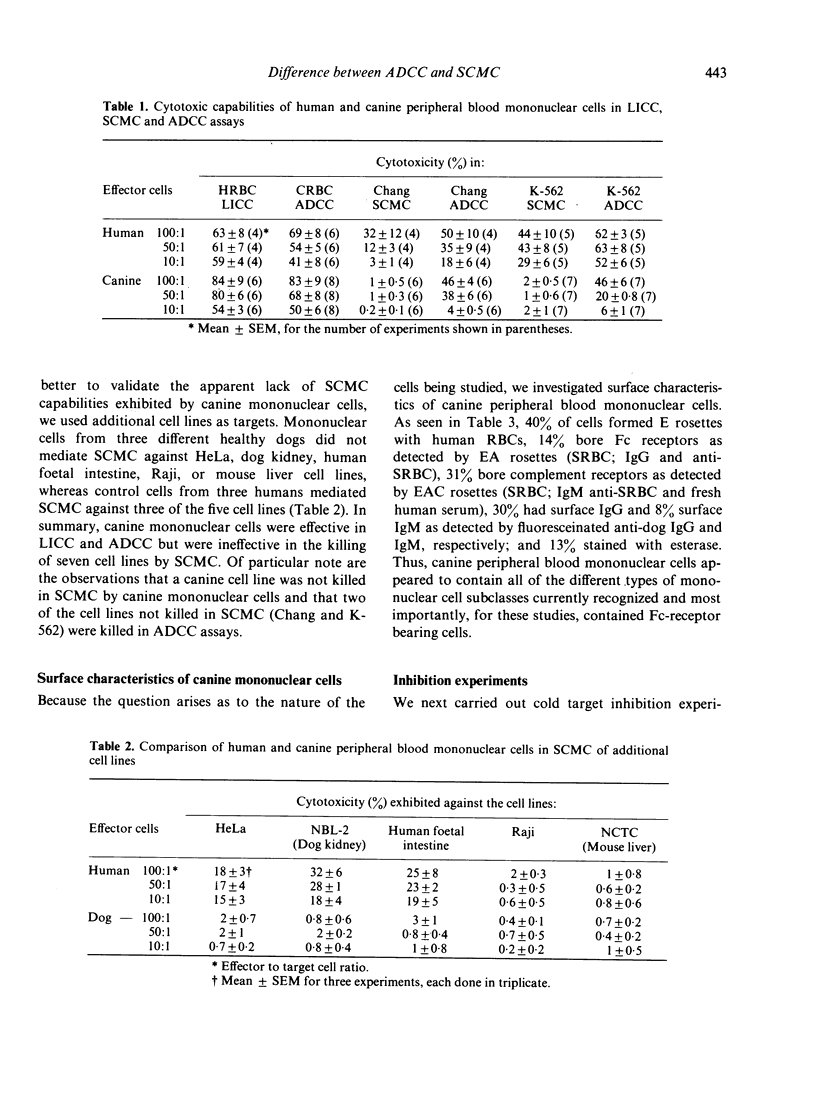
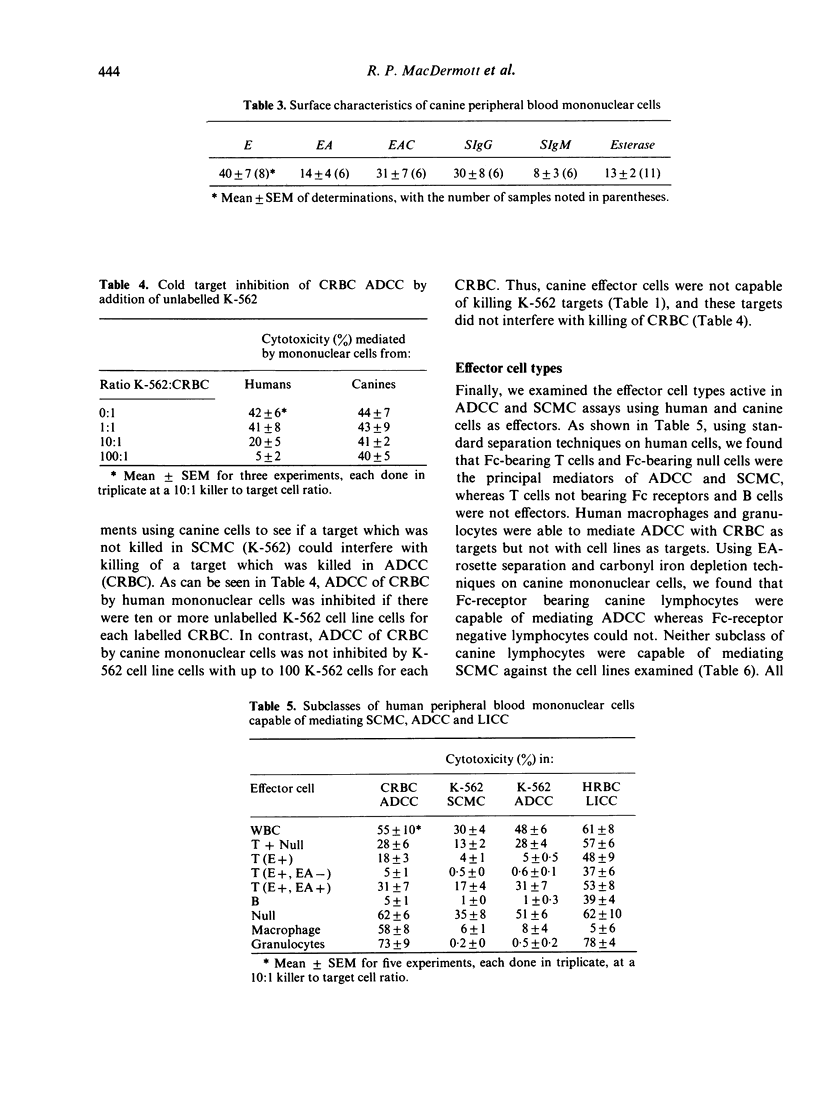
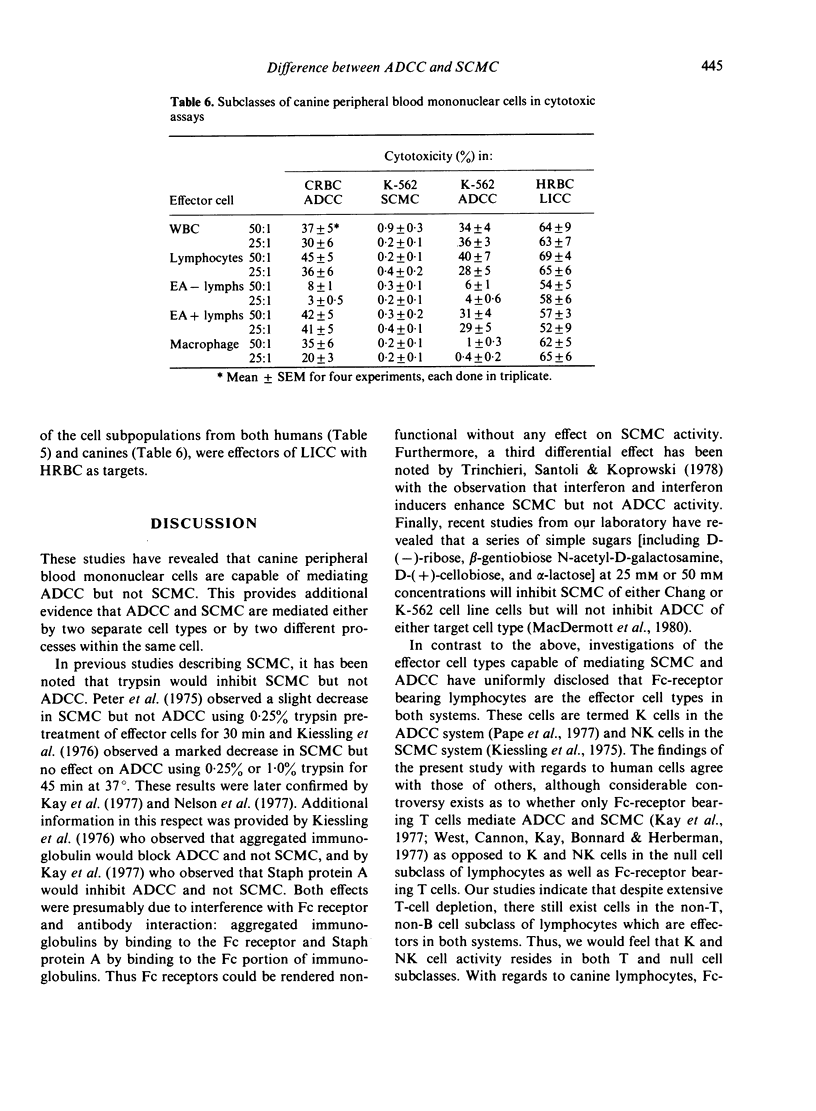

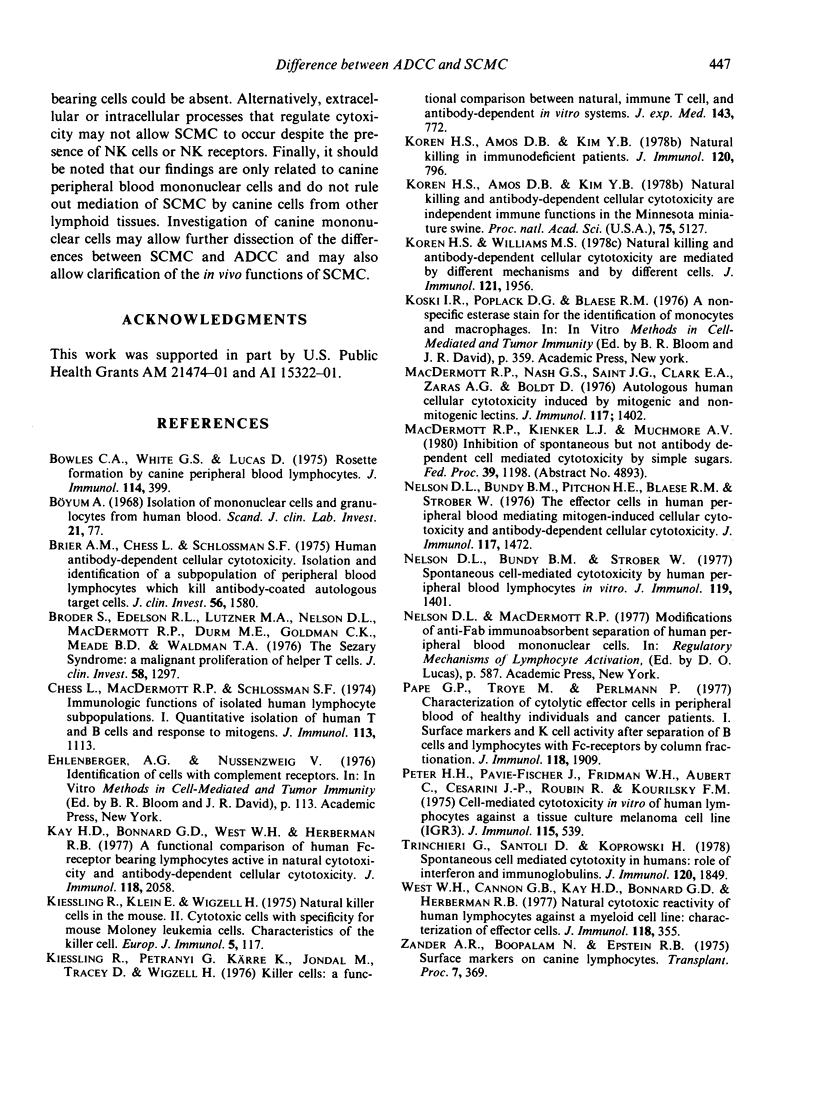
Selected References
These references are in PubMed. This may not be the complete list of references from this article.
- Bowles C. A., White G. S., Lucas D. Rosette formation by canine peripheral blood lymphocytes. J Immunol. 1975 Jan;114(1 Pt 2):399–402. [PubMed] [Google Scholar]
- Brier A. M., Chess L., Schlossman S. F. Human antibody-dependent cellular cytotoxicity. Isolation and identification of a subpopulation of peripheral blood lymphocytes which kill antibody-coated autologous target cells. J Clin Invest. 1975 Dec;56(6):1580–1586. doi: 10.1172/JCI108240. [DOI] [PMC free article] [PubMed] [Google Scholar]
- Broder S., Edelson R. L., Lutzner M. A., Nelson D. L., MacDermott R. P., Durm M. E., Goldman C. K., Meade B. D., Waldmann T. A. The Sézary syndrome: a malignant proliferation of helper T cells. J Clin Invest. 1976 Dec;58(6):1297–1306. doi: 10.1172/JCI108585. [DOI] [PMC free article] [PubMed] [Google Scholar]
- Böyum A. Isolation of mononuclear cells and granulocytes from human blood. Isolation of monuclear cells by one centrifugation, and of granulocytes by combining centrifugation and sedimentation at 1 g. Scand J Clin Lab Invest Suppl. 1968;97:77–89. [PubMed] [Google Scholar]
- Chess L., MacDermott R. P., Schlossman S. F. Immunologic functions of isolated human lymphocyte subpopulations. I. Quantitative isolation of human T and B cells and response to mitogens. J Immunol. 1974 Oct;113(4):1113–1121. [PubMed] [Google Scholar]
- Kay H. D., Bonnard G. D., West W. H., Herberman R. B. A functional comparison of human Fc-receptor-bearing lymphocytes active in natural cytotoxicity and antibody-dependent cellular cytotoxicity. J Immunol. 1977 Jun;118(6):2058–2066. [PubMed] [Google Scholar]
- Kiessling R., Klein E., Pross H., Wigzell H. "Natural" killer cells in the mouse. II. Cytotoxic cells with specificity for mouse Moloney leukemia cells. Characteristics of the killer cell. Eur J Immunol. 1975 Feb;5(2):117–121. doi: 10.1002/eji.1830050209. [DOI] [PubMed] [Google Scholar]
- Kiessling R., Petranyi G., Kärre K., Jondal M., Tracey D., Wigzell H. Killer cells: a functional comparison between natural, immune T-cell and antibody-dependent in vitro systems. J Exp Med. 1976 Apr 1;143(4):772–780. doi: 10.1084/jem.143.4.772. [DOI] [PMC free article] [PubMed] [Google Scholar]
- Koren H. S., Amos D. B., Buckley R. H. Natural killing in immunodeficient patients. J Immunol. 1978 Mar;120(3):796–799. [PubMed] [Google Scholar]
- Koren H. S., Amos D. B., Kim Y. B. Natural killing and antibody-dependent cellular cytotoxicity are independent immune functions in the Minnesota miniature swine. Proc Natl Acad Sci U S A. 1978 Oct;75(10):5127–5131. doi: 10.1073/pnas.75.10.5127. [DOI] [PMC free article] [PubMed] [Google Scholar]
- Koren H. S., Williams M. S. Natural killing and antibody-dependent cellular cytotoxicity are mediated by different mechanisms and by different cells. J Immunol. 1978 Nov;121(5):1956–1960. [PubMed] [Google Scholar]
- MacDermott R. P., Nash G. S., Saint J. G., Clark E. A., Zaras A. G., Boldt D. Autologous human cellular cytotoxicity induced by mitogenic and nonmitogenic lectins. J Immunol. 1976 Oct;117(4):1402–1403. [PubMed] [Google Scholar]
- Nelson D. L., Bundy B. M., Pitchon H. E., Blaese R. M., Strober W. The effector cells in human peripheral blood mediating mitogen-induced cellular cytotoxicity and antibody-dependent cellular cytotoxicity. J Immunol. 1976 Nov;117(5 Pt 1):1472–1481. [PubMed] [Google Scholar]
- Nelson D. L., Bundy B. M., Strober W. Spontaneous cell-mediated cytotoxicity by human peripheral blood lymphocytes in vitro. J Immunol. 1977 Oct;119(4):1401–1405. [PubMed] [Google Scholar]
- Peter H. H., Pavie-Fischer J., Fridman W. H., Aubert C., Cesarini J. P., Roubin R., Kourilsky F. M. Cell-mediate cytotoxicity in vitro of human lymphocytes against a tissue culture melanoma cell line (igr3). J Immunol. 1975 Aug;115(2):539–548. [PubMed] [Google Scholar]
- Trinchieri G., Santoli D., Koprowski H. Spontaneous cell-mediated cytotoxicity in humans: role of interferon and immunoglobulins. J Immunol. 1978 Jun;120(6):1849–1855. [PubMed] [Google Scholar]
- West W. H., Cannon G. B., Kay H. D., Bonnard G. D., Herberman R. B. Natural cytotoxic reactivity of human lymphocytes against a myeloid cell line: characterization of effector cells. J Immunol. 1977 Jan;118(1):355–361. [PubMed] [Google Scholar]
- Zander A. R., Boopalam N., Epstein R. B. Surface markers on canine lymphocytes. Transplant Proc. 1975 Sep;7(3):369–373. [PubMed] [Google Scholar]


